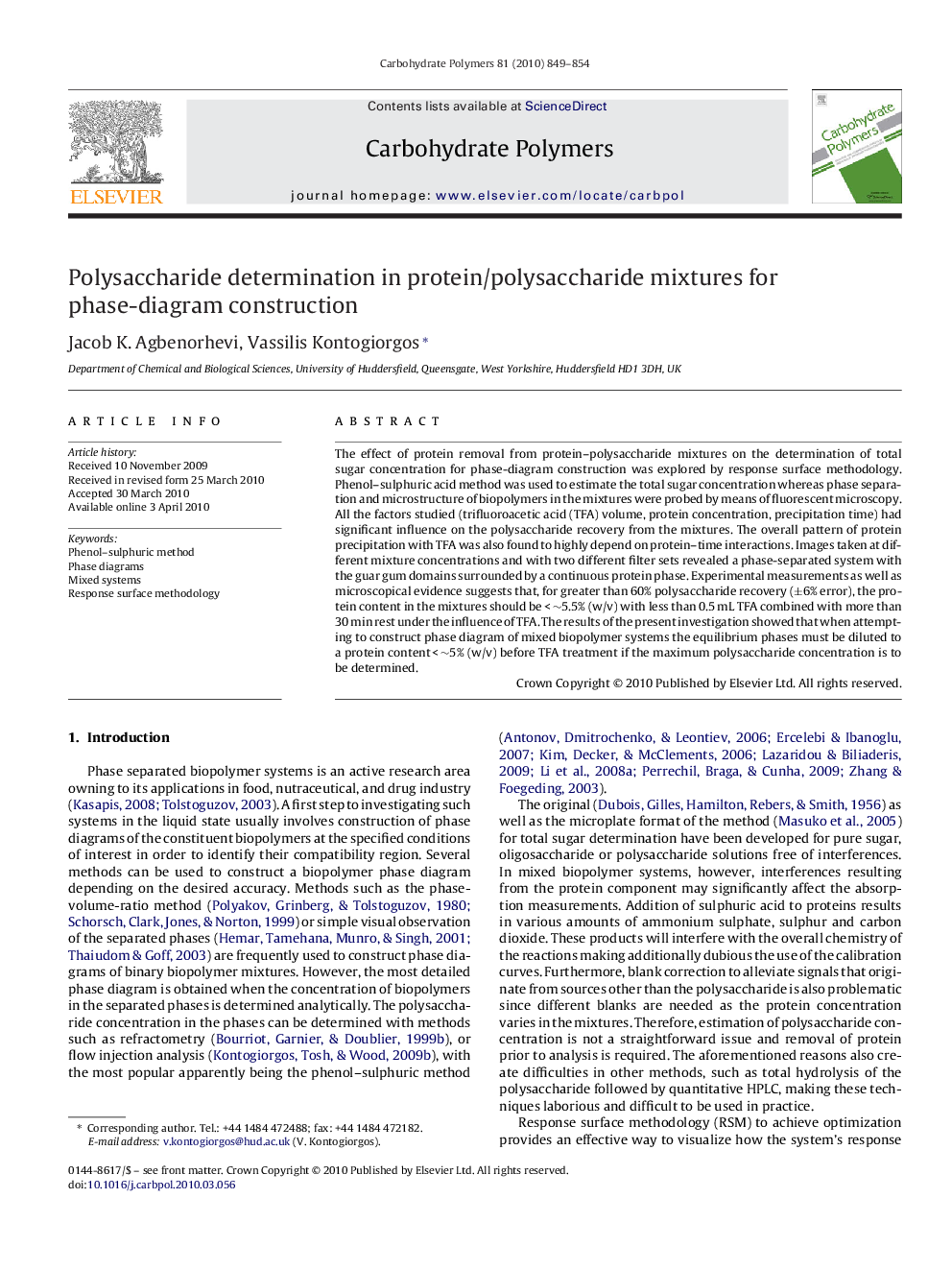| Article ID | Journal | Published Year | Pages | File Type |
|---|---|---|---|---|
| 1384278 | Carbohydrate Polymers | 2010 | 6 Pages |
The effect of protein removal from protein–polysaccharide mixtures on the determination of total sugar concentration for phase-diagram construction was explored by response surface methodology. Phenol–sulphuric acid method was used to estimate the total sugar concentration whereas phase separation and microstructure of biopolymers in the mixtures were probed by means of fluorescent microscopy. All the factors studied (trifluoroacetic acid (TFA) volume, protein concentration, precipitation time) had significant influence on the polysaccharide recovery from the mixtures. The overall pattern of protein precipitation with TFA was also found to highly depend on protein–time interactions. Images taken at different mixture concentrations and with two different filter sets revealed a phase-separated system with the guar gum domains surrounded by a continuous protein phase. Experimental measurements as well as microscopical evidence suggests that, for greater than 60% polysaccharide recovery (±6% error), the protein content in the mixtures should be < ∼5.5% (w/v) with less than 0.5 mL TFA combined with more than 30 min rest under the influence of TFA. The results of the present investigation showed that when attempting to construct phase diagram of mixed biopolymer systems the equilibrium phases must be diluted to a protein content < ∼5% (w/v) before TFA treatment if the maximum polysaccharide concentration is to be determined.
